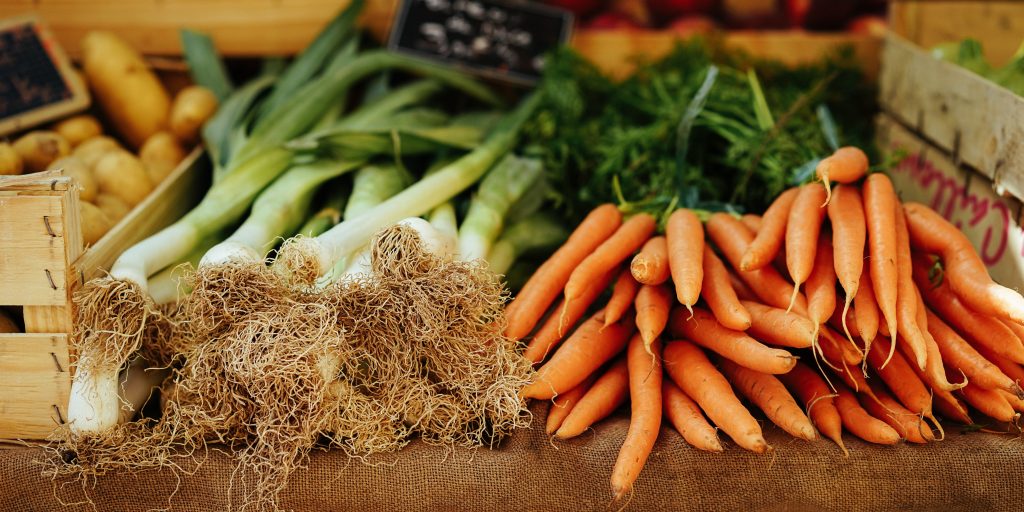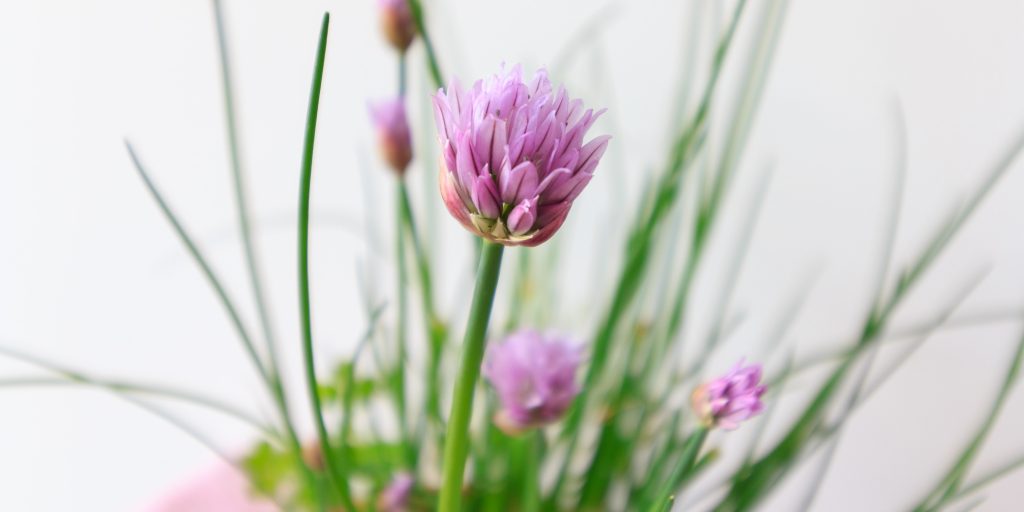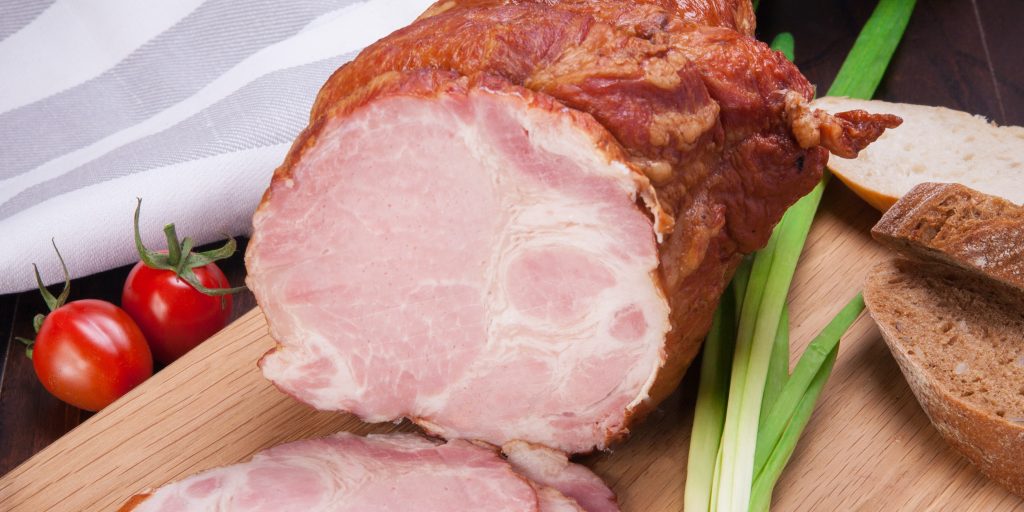
Eating Greens
Most people know that eating greens is good for them, but most also don’t eat enough of them. Leafy green vegetables are packed with nutrients, are easy to find, and are often cheap or free.
Greens are nutrient dense, low calorie, fiber filled, inexpensive boosts for your health. You can find them all year round locally, and should be eaten frequently.
Greens are easy to incorporate into your diet. A salad or smoothie can be a great way to fit eating greens into your diet. Some are better cooked, and finding recipes that make a great side dish or other way to add greens to your meals is easy.
Greens can taste bitter, lemony, or neutral. Find which ones you like best, or mix and match to make sure you get the best flavor in your meal. At the farmers market, try buying some that you are unfamiliar with and asking how best to enjoy them.
Often greens are overlooked and wasted. Beets and turnips should come with greens attached and they should be enjoyed. Greens don’t last long, but when you start eating greens regularly you’ll learn to eat them before they go bad.
Finding Your Greens
Growing greens takes up very little space, and can be done inside or on a small balcony. The plants grow fast, they are great in containers, and you will be eating greens with little work on your part.
You can grow a small container garden with lettuce, spinach, or other green plant. You can also grow microgreens all year inside.
Foraging greens is a great free option that takes some education, and wild greens are often more nutritious than their domesticated cousins. Weeds and trees both offer green leaves that are edible. Eating greens you forage is cheap and healthy.
Buying greens at the market can be cheaper than the flashier vegetables and fruits you will find. Some greens come free with your beets, turnips or other vegetables. Eating greens rather than wasting them is a great idea.
You should be able to find local greens year round. Spring and fall are best for most conventionally farmed greens, as summer is too hot and winter too cold to really grow most greens. Yet you can grow or buy local greens in winter thanks to greenhouse or microgreen growing.
Even in summer some growing techniques will allow some cool season greens to grow. There are also greens that have varieties that handle heat better, or are more tropical and prefer the heat.
Your local greens will change throughout the year because different ones thrive in different seasons. Maybe your farmer will let you taste before you buy, so you can learn to enjoy all the different flavor profiles you will find.
Of course, you can find greens year round in the grocery store. However, greens don’t last long, and are best fresh. Buying them locally, growing your own, or foraging for them are the best ways to ensure you get the freshest options, with the most nutrients and flavor.
Greens You Might Find Locally
Kale – Kale can be bitter raw, but the taste mellows when cooked. You’ll find it late summer through fall into winter in Maryland.
Arugula – has a peppery flavor, and is great raw. Find it locally from early spring to early summer.
Bok Choy – also called Chinese cabbage, bok choy is mild and tender. It is used in stir fries and soups, and found in late summer to winter.
Spinach – has a mild flavor that works well raw or cooked. Baby leaves are milder and more tender. Spinach grows in spring and fall.
New Zealand Spinach – not really spinach, but can be eaten raw or cooked and is similar to real spinach. Grows well in hot weather, so this is one of the few summer greens.
Collards – are slightly bitter, and best cooked. The leaves are a bit tough so raw isn’t as good. Find them in fall to early winter.
Sorrel – looks like spinach but has a tart flavor. It is great raw in salads, and retains the lemon flavor in cooked dishes as well. Find in early summer.
Swiss Chard – is related to beets and tastes like spinach. Like both, chard grows in spring and fall as well.
Mustard – are peppery and spicy. They lose some of the bite when cooked, and are usually not eaten raw. Find them in fall.
Microgreens – are actually a mix of different baby vegetables. Different seeds give different flavors. Find them year round.
Turnip – are prickly, so are best cooked. They can be slightly peppery. They are found in fall.
Beet – buy them when you get your beets. They are similar to spinach and chard, and can be eaten raw in salads or sauteed. Find them in spring and fall.
Radish – don’t discard the leaves. Roast or saute them, as they aren’t great raw. Find these peppery greens in spring.
Dandelion – this weed is edible, and the leaves are earthy when young, bitter as they grow. Eat them raw or cooked and treat like spinach. Found in spring and fall.
Sweet Potato – the leaves of sweet potatoes are edible too! Young leaves are good raw, while older leaves can be cooked like spinach. They grow in summer.
Wild Greens – many other plants have edible leaves. Learning about them means you too can find free greens to try!
Storing Your Greens
Greens do not store well long term. Beets and turnips store for months in the right conditions, but not their leaves.
To keep your greens fresh for at least a week, wash and dry them, wrap in a clean towel, and place in a glass container in a cold part of the fridge.
If you want, try placing hardier greens upright in a jar with water in it and replacing the water each day.
Freezing greens is the best way to keep them long term. Blanching them before freezing is best, but you can also freeze greens without blanching. Use thawed greens in cooked dishes all winter.
Enjoying Your Greens
Greens can be a great addition to any dish. Whether you prefer a salad or to add them as side dishes or a regular vegetable in the meal, adding greens to your cooking will give you a nutrition boost.
Eating lots of different types of greens is also a great choice because they all are nutritious in some way. They are easy to find, easy to cook, and cheap to buy.
Your greens won’t last long, but you can freeze your favorites for cooked greens for later.
Greens are a great source of nutrition, and are lacking in most people’s diets. Get into the habit of including greens with your meals each day. Make a game of it, and see how many ways you can add them into your life.
With so many great options out there for greens, you are sure to find the right ones for you!





